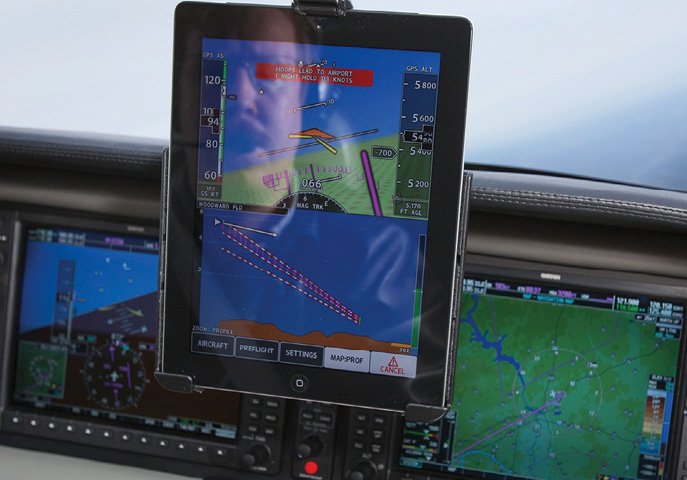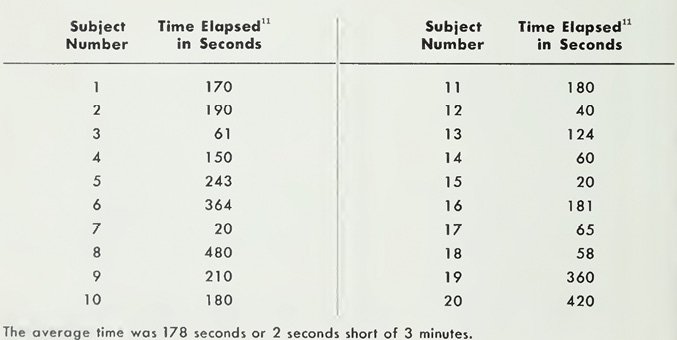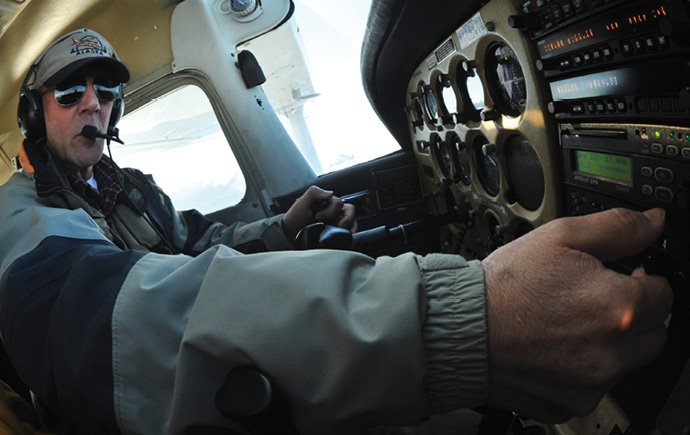Becoming disoriented in flight is one of the most terrifying experiences pilots can have. In extreme cases, it leads to loss of control, controlled flight into terrain or even an inflight breakup. Less extreme experiences lead to pilot deviation or, more optimally and after the afflicted pilot is safely back on the ground, the expense of pursuing an instrument rating.
In its curriculum for teaching student pilots, the FAA primarily focuses on the aeromedical causes of spatial disorientation—the vestibular-ocular system, somatogyral and somatogravic illusions, visual illusions and otolith organs. The FAA’s safety brochure on spatial disorientation covers the same material. Both of them help pilots understand how our inner ear and visual senses fail us when we lose visual references and are subjected to various disorienting movements or confusing sight pictures.
While understanding the physiological cause of “the leans” is extremely helpful, a review of the usual sources (NTSB and NASA Aviation Safety Reporting System reports) provides a sense of the more proximate human choices that can also lead to spatial disorientation. In other words, there are times when disorientation can first be a poor-choice problem that then leads to an inner-ear problem.

Night Disorientation
Most pilots have limited night-flying experience. We do it for our initial training, and some of us stay night-current; night tours of city lights are popular experience-builders. Meanwhile, the FAA’s night currency requirements focus on landing proficiency. While it is true that night landing skills are important, night disorientation occurs mostly during other phases, such as climbing out into a classic “black hole” or flying cross-country.
A common night disorientation scenario is transiting from an area with many lights to empty countryside with few scattered lights (or none at all). I distinctly remember my first experience with night disorientation. I was a VFR-only pilot at the time and did not have a good instrument scan, nor much night experience, but thought I was proficient enough. I was flying from Boise to American Falls, Idaho, in a rented two-seat Alarus. The plane was painfully slow, so instead of flying over the highway, I hit the “Direct To” button on the GPS so I could fly the shortest path over the empty sagebrush back to the airport. Between the lack of lights and the moonless night, I strayed significantly off-course more than a few times. I knew my saving grace was the magenta line that I was able to keep pointed ahead.

Before going on a long cross-country night flight, consider doing some hood work and attitude instrument flying. If you can, do it at night. It’s one of the best ways to get the most out of hood work with an instructor. Night work may not be IMC, but it is the next best thing and it will serve the dual value of honing both instrument and night flying skills.
VFR-into-IMC
It is rare to meet a pilot who isn’t familiar with the most notorious mode of failure, flying VFR into IMC. And yet, despite often leading to fatal loss of control, spatial disorientation in IMC remains just as prevalent as ever. According to the AOPA Air Safety Institute’s 2018 Nall Report, which analyzes accidents in 2015, the majority of weather accidents resulted from VFR flights into IMC. Moreover, as a category, it had both the largest number of fatal accidents and the highest lethality rate. At the end, it doesn’t matter which physiological function failed, whether visual illusion or inner ear function, dead is dead.
Another approach often taught is the four-C strategy, “Climb, Communicate, Confess, Comply,” which is basically declare an emergency and allow ATC to vector you out of your current situation. It only works well if you are in an area with radar coverage and already have directional control of the aircraft.
I suspect one reason VFR-into-IMC spatial disorientation failure remains common is a combination of get-there-itis and good forecasts, or at least better weather reports on the other side of the weather system. In my experience, deteriorating weather rarely gets better.
To avoid getting caught, question yourself beforehand to discern whether there is any chance a disorientation scenario could play out. Are visibilities low? Are you flying in marginal weather? If so, are your instrument skills up to snuff? Do you have a graceful “out” if you do find yourself in IMC? Because if Murphy’s Law prevails and conditions degrade to IMC and you don’t or can’t exercise your out, you will get a baptism by fire. In general, I would say assume things will always get worse. In deteriorating weather, it is usually true. Optimism is not a good aviation attitude.
Less Movement, More Scan
Two factors that lead even instrument-rated pilots into disorientation a are poor instrument scan and too much head movement. It may be hard to have a great scan or a smooth flight when the plane is bouncing around in rough air, but a bad scan and over-controlling makes maintaining control more difficult and disorientation more likely.
Many of the NASA ASRS reports citing disorientation involved rough air that taxed pilot skills. In some cases, the pilots momentarily blew through an altitude or a heading due to excessive head motion interfering with orientation, and the resulting moments of brief disorientation contributed to errors in heading or altitude. Over-controlling led to multiple fits and starts of losing and recovering control, also increasing disorientation.
Luckily, there is an excellent coping strategy: attitude instrument flying, the skill of controlling an aircraft strictly by the flight instruments without reference to outside visual cues. At its heart, the skill requires a smooth scan and gentle control of the aircraft. Every pilot gets a little hood time, and instrument pilots must prove they have at least some minimum skills before the rating is conferred. But regular practice is mandatory. The better your scan and the smoother your control inputs, the more precise your instrument flying will be. Done well, it has a Zen-like quality; you will be in a state of pure focus with no wasted motion.
Geographic Disorientation
Geographic disorientation may not be linked with the classic spatial flavor, but it is just as mentally confusing. Recovering—cognitively regaining situational awareness—can take time. Geographic disorientation can lead to pilots landing at the wrong airports, on the wrong runways or, in several documented cases, confusing highways or golf course lights for the actual runway environment. It can also lead to controlled flight into terrain. It happens both in VMC and IMC, and is extremely common at night.
By geographic disorientation, I mean the state where pilots become cognitively untethered from where they think they are on a map, disoriented to the point that they may be southbound while cognitively thinking (and reporting) they are northbound, or east of the airfield, but thinking they are west of the field. In this mode, pilots will often relay incorrect position reports to other pilots or controllers. The result is often reciprocal responses to those that are needed or requested. Errors can then compound because instructions based on erroneous reported positions can lead to further confusion.
A common problem resulting from geographic disorientation is loss of separation. In one such case from NASA reports, a pilot got disoriented and lined up for a left downwind instead of a right downwind. The result was a close call missing an oncoming opposite-direction plane by 200 feet vertical and 400 feet horizontal.
In another example, a pilot entered the wrong VOR frequency during flight planning and carried the error into the flight itself. Once airborne, the actual course was significantly different from the planned course. The pilot didn’t realize something was wrong until he had flown through two restricted areas and across an ADIZ marking the international border.
Autopilot Disorientation
Generally, autopilots help us avoid disorientation. Even when the pilot has the leans and swears he is in a turn, an autopilot can keep the wings level and the plane on altitude and heading. Some autopilots even feature a so-called panic button to reestablish level flight when the pilot can’t.
The problem is autopilots are not foolproof. Not only can they disengage when the pilot is least prepared to take over by hand-flying—in turbulence for example—but pilots can assume the autopilot is doing its job when actually it is not. Either way, the result can be a momentary loss of control and disorientation.
I experienced this kind of disorientation while I was holding at an initial approach fix waiting for weather conditions to rise above minimums. In the process of changing flight plans, the autopilot kicked off and the aircraft immediately assumed an attitude I wasn’t expecting. A wrestling match ensued while I regained control, over-controlling the plane a bit before regaining stability. While I was doing this, weather improved above minimums, but the momentary wrestling match with the aircraft gave me the “leans” all the way down the final approach.
I try to avoid autopilot surprises by occasionally turning off the autopilot to reassure myself that my aircraft is stable. Then if the autopilot does hand things back over, I at least inherit a trimmed aircraft. It has become my habit. To further inoculate yourself, trust the autopilot, but verify with a good scan, and keep your hand-flying skills fully honed so you’re ready to take over.
Attitude Instrument Flying
No matter how you end up experiencing disorientation—in IMC, at night, in turbulence or when an autopilot quits—experiencing disorientation is extremely unpleasant, even terrifying. Whether or not you recover control is mostly a reflection of your training and how fast you regain your wits. Even if the final physiological cause can be pinned to the vestibular system or otolith organs, the choices pilots make prior to disorientation can tell the tale, as the NASA and NTSB reports show.
If you have good attitude instrument-flying skills and are well-practiced with unusual attitude recovery (preferably under the hood), you increase your chances of surviving disorientation. And as the sidebar on page 13 explains, if you don’t have good instrument flying skills and haven’t planned a way to avoid circumstances leading to it, well, you have about 178 seconds.

Two Seconds Short of Three Minutes
A 1954 study, the “180-degree Turn Experiment” commissioned by the AOPA Foundation and conducted by the University of Illinois, studied 20 noninstrument pilots flying a Beech C35 Bonanza. The purpose was to teach a simple recovery technique for disorientation in IMC. The technique involved leveling the wings, centering the ball, slowing the plane down, controlling the altitude with trim and slowly doing a 180-turn with rudder alone (to avoid over-controlling). Once heading in the opposite direction, participants were taught to reduce power and start a gentle descent to assist in gently breaking out below the ceiling without inducing disorientation.
The study is famous, or infamous if you will, for the statistics recorded before the subjects learned the recovery technique. It took them an average of 178 seconds from the VFR-to-IMC transition to enter either a stall or graveyard spiral (see the excerpted table above).
There’s a video out there popularizing the study and whether you read the script or view one of the video’s several versions, the melodramatic countdown reinforces the idea that the average VFR-only pilot has less than three minutes before they are dead unless they have some kind of coping strategy to safely get out of the clouds.
The recovery technique taught in the 1954 study, a 180-degree turn out of IMC back to VMC, proved remarkably effective. With six one-hour training sessions, the study’s subjects improved the 178-second crash-and-burn statistic to a 98-percent survival rate.

Don’t Forget Your Scan
I recently had an experience where I confronted this kind of disorientation. I had been hand-flying my aircraft in IMC conditions with no issues for about two hours. At the end of the flight, it was time to descend and there were reports of both turbulence and icing. On my final descent and waiting for a vectored base turn to the localizer, I passed through the reported conditions with clouds that had both a bounce and ice. At that point, I broke away from my instrument scan to do a few pre-landing checklist items, and made some choices that opened the door to disorientation.
I looked at the approach plate and verified the sequence, then looked up to turn on fuel pumps and looked down to switch tanks. Instead of returning to my scan, I looked back up and left to turn on the wing light, and then looked out the window to check for ice. I saw more than I wanted to, so I looked up and right for the switch to blow the boots.
If you aren’t dizzy just from reading this, I will tell you that it was too much head movement and not enough scan. By the time I got back to my scan, I was in a steep turn and descending. I recovered the plane from the unusual attitude (reduce power, level wings, raise nose), but by that time I had a lot of spatial disorientation and was behind the aircraft for the rest of the approach.
Lesson learned. Don’t try to squeeze so many tasks and head movements between scans. Doing so is asking for trouble.
Mike Hart is an Idaho-based flight instructor and proud owner of a 1946 Piper J-3 Cub and a Cessna 180. He also is the Idaho liaison to the Recreational Aviation Foundation.




